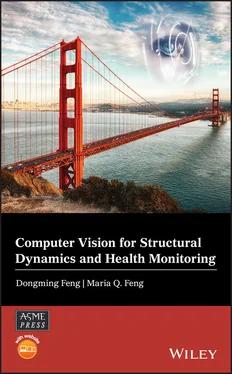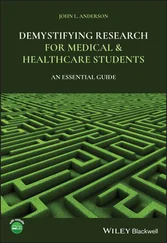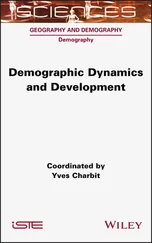Library of Congress Cataloging‐in‐Publication Data
Names: Feng, Dongming, 1985– author. | Feng, Maria, 1961– author.
Title: Computer vision for structural dynamics and health monitoring / Dongming Feng, Ph.D, Professor, Southeast University, Maria Feng, Ph.D, Renwick Professor, Columbia University.
Description: First edition. | Hoboken, NJ : John Wiley & Sons, Inc., [2021] | Series: Wiley‐ASME press series | Includes bibliographical references and index.
Identifiers: LCCN 2020017110 (print) | LCCN 2020017111 (ebook) | ISBN 9781119566588 (cloth) | ISBN 9781119566564 (adobe pdf) | ISBN 9781119566571 (epub)
Subjects: LCSH: Structural dynamics–Data processing. | Structural health monitoring–Data processing. | Computer vision–Industrial applications.
Classification: LCC TA654 .F46 2020 (print) | LCC TA654 (ebook) | DDC 624.1/710285637–dc23
LC record available at https://lccn.loc.gov/2020017110LC ebook record available at https://lccn.loc.gov/2020017111
Cover Design: Wiley
Cover Images: Golden Gate Bridge, San Francisco
© ventdusud /Shutterstock, eye with visual effects
© SFIO CRACHO/Shutterstock
The Wiley‐ASME Press Series in Mechanical Engineering brings together two established leaders in mechanical engineering publishing to deliver high‐quality, peer‐reviewed books covering topics of current interest to engineers and researchers worldwide.
The series publishes across the breadth of mechanical engineering, comprising research, design and development, and manufacturing. It includes monographs, references and course texts.
Prospective topics include emerging and advanced technologies in Engineering Design; Computer‐Aided Design; Energy Conversion & Resources; Heat Transfer; Manufacturing & Processing; Systems & Devices; Renewable Energy; Robotics; and Biotechnology.
Over the past few decades, a significant number of studies have been conducted in the area of structural health monitoring (SHM), with the objective of detecting anomalies and quantitatively assessing structural integrity based on measurements using various types of sensors. Although these studies have produced SHM methods, frameworks, and algorithms that have been validated through numerical, laboratory, and field applications, their wide deployment in real‐world engineering structures is limited by the prohibitive requirement of installing dense on‐structure sensor networks and associated data‐acquisition systems. To address these practical limitations, the research and industrial communities have been actively exploring new sensing technologies that can advance the current state‐of‐the‐art in SHM.
Rapid advances in digital cameras and computer vision algorithms have made vision‐based sensing a promising next‐generation monitoring technology to complement conventional sensors. Significant advantages of the vision‐based sensor include its low cost, ease of setup and operation, and flexibility to extract displacements at multiple points on the structure from a single video measurement. In the past 10 years, the authors have been fortunate to lead, participate in, and witness the development of computer vision‐based sensing and its application to structural dynamics and SHM. In our activities, however, we have seen a gap between the significant potential offered by this emerging sensing technology and its practical applications. Many undergraduate and graduate students, researchers, and practicing engineers are interested in learning how this sensing technology works and what unique benefits it can offer.
This book is intended to provide a comprehensive introduction to vision‐based sensing technology, based primarily on the authors' research. Fundamental knowledge, important issues, and practical techniques critical to the successful development of the vision‐based sensor are presented and discussed in detail. A wide range of tests have been carried out in both laboratory and field environments to demonstrate its measurement accuracy and unique merits. The potential of the vision sensor as a fast and cost‐effective tool for solving SHM problems is explored. In addition to SHM, novel and practical solutions to other engineering problems are presented, such as estimating cable tension forces using vision‐based sensing. Finally, the book outlines the achievements and challenges of current vision‐based sensing technologies, as well as open research challenges, to assist both the structural engineering and computer science research communities in setting an agenda for future research.
The goal of this book is to help encourage the application of the emerging vision‐based sensing technology not only in scientific research but also in engineering practice, such as assessing the field condition of civil engineering structures and infrastructure systems. Although the book is conceived as an entity, its chapters are mostly self‐contained and can serve as tutorials and reference works on their respective topics. The book may also serve as a textbook for graduate students, researchers, and practicing engineers; thus, much emphasis has been placed on making the computer vision algorithms, structural dynamics, and SHM applications easily accessible and understandable. To achieve this goal, we provide MATLAB code for most of the problems discussed in the book. In addition, readers working in structural dynamics and health monitoring will find this book hands‐on and useful.
The authors would like to express their gratitude to the following individuals: Professors Shun’ichi Kaneko and Takayuki Tanaka at Hokkaido University, for inspiring the authors' work on computer vision more than a decade ago and for kindly providing the orientation code matching (OCM) MATLAB code included in Chapter 2; Dr. Yoshio Fukuda, former associate research scientist at Columbia University, for developing the OCM software package with the C++ language; Casey Megan Eckersley, PhD student of Columbia University, for her valuable assistance in editing the book; and last but not least, the authors' families for their strong support.
About the Companion Website
The companion website for this book is at
www.wiley.com/go/feng/structuralhealthmonitoring 
The website includes: MATLAB CODES for chapters 2, 4, 6, 7 and appendix_matlab codes.
Scan this QR code to visit the companion website.

1 Introduction
1.1 Structural Health Monitoring: A Quick Review
Structures and civil infrastructure systems, including bridges, buildings, dams, and pipelines, are exposed to various external loads throughout their lifetimes. As they age and deteriorate, effective inspection, monitoring, and maintenance of these systems becomes increasingly important. However, conventional practice based on periodic human visual inspection is time‐consuming, labor‐intensive, subjective, and prone to human error. Nondestructive testing techniques have shown potential for detecting hidden damages, but the large size of the structural systems presents a significant challenge for conducting such localized tests. Over the past few decades, a significant number of studies have been conducted in the area of structural health monitoring (SHM), aiming at timely, objective detection of damage or anomalies and quantitative assessment of structural integrity and safety based on measurements by various on‐structure sensors [1–4]. Most of the SHM techniques are based on structural dynamics, and the basic principle is that any structural damage or degradation would result in changes in structural dynamic responses as well as the corresponding modal characteristics. The SHM process is implemented in four key steps: data acquisition, system identification, condition assessment, and decision‐making.
Читать дальше














